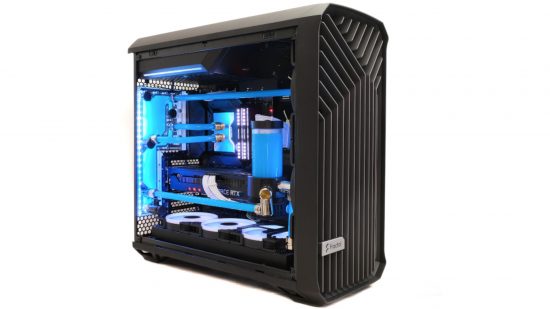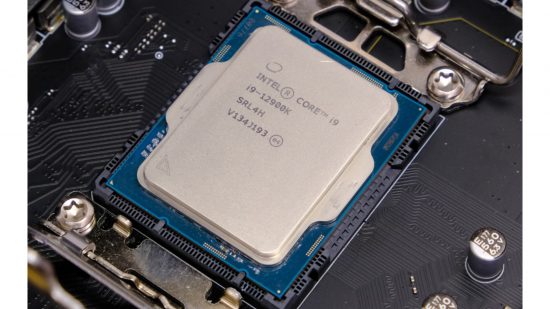A couple of years ago I remember saying (after several new CPU launches) that boosting algorithms would have a huge impact in the future, and that they could even make overclocking only worthwhile on a select few CPUs. In fact, this situation has changed even more than I predicted.
Intel’s Alder Lake CPUs don’t just rely on boosting to optimise performance in varying workloads, but dynamic clock speed adjustment also has an impact on features such as Intel’s thread director, which divvies up work across a CPU’s P-Cores and E-Cores.
The result is that most mid-range and high-end CPUs are now hitting frequencies at stock speed that are too difficult, time-consuming or power hungry to better achieve with a manual all-core overclock.
As usual, all-core frequencies can usually be bettered with an overclock, making them a tempting overclock for those who want the best multi-threaded performance. The issue is that you usually kill all boosting on the CPU if you do an all-core overclock, potentially reducing single and lightly threaded performance.
I can safely say that my next PC will likely not have any kind of overclock, especially as I’ll be upgrading from a Ryzen 3000-series CPU – I’ll be getting a huge boost from either the Ryzen 5000-series CPU or Intel 12th-gen chip I buy, whether it’s overclocked or not.
However, both those ranges of CPUs, while more efficient than their predecessors, still benefit from high-end cooling setups. Both have options to boost performance above default settings, such as AMD Precision Boost Overdrive, as well as Intel’s various boosting add-ons, such as Thermal Velocity Boost and the numerous power limits available for its 12th-gen CPUs.
Of course, cooling a Core i9-12900K or Ryzen 9 5950X is no easy task either. You’ll need a large liquid cooler, or one of the biggest air coolers, to cool them under load at low noise levels. In smaller cases with less airflow, you’ll need to pay even closer attention to your choice of cooling. For me, the case for water-cooling your PC is as strong as ever, whether you’re overclocking your CPU or not.
It’s not just CPUs that push the limits of mainstream power and cooling demands – graphics cards do it too. Graphics card coolers have to be enormous these days, in order to cope with the large heatloads produced in gaming workloads, and the memory modules on the rear of some cards get so hot, they can result in the card throttling too.
It’s no surprise, then, that waterblock manufacturers such as EK have produced actively cooled backplates for some high-end cards – in particular Nvidia’s RTX 3000-series. Even if you don’t consider the backplate heat issues, graphics cards are usually the loudest components in PCs when you’re gaming as well.
Some of the massive coolers can keep noise in check with good airflow, but another benefit of water-cooling your graphics card is that you don’t need to worry as much about airflow. For instance, if you want to mount your graphics card vertically or near a tempered glass panel, perhaps in a way that allows you to fit more cooling hardware in your case, your graphics card will always be cooler if it’s water-cooled than air-cooled.
For these reasons, whichever CPU I use in my next PC, I’m pretty sure it won’t be manually overclocked, since I mainly need the best single and lightly threaded performance from my CPU, which is best achieved by using its boosting algorithms.
However, it will still be water-cooled, as having some cooling headroom means I can still use a monstrous CPU and graphics card, but keep noise levels low even in games, while allowing the boosting algorithms to hit the highest speeds possible. It might also be useful when it comes to dealing with the next generation of GPUs, which are reportedly very power-hungry.

